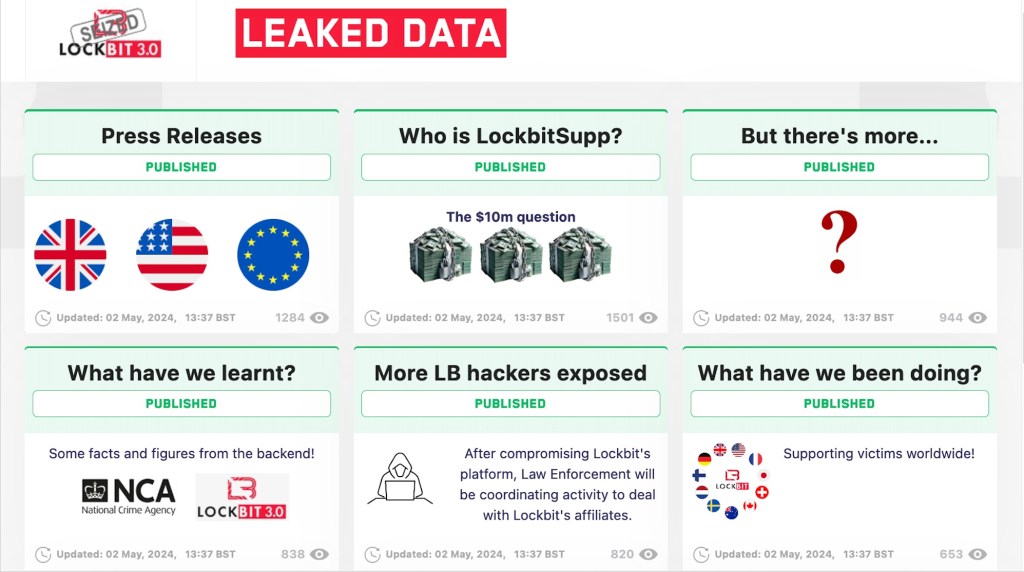“The Ruin stirs, and the Five Realms rumble,” a now-archived web announcement read on Thursday morning. “You are cordially invited to join New York Times bestselling and award-winning authors Marie Lu, Tahereh Mafi, Ransom Riggs, Adam Silvera, David Yoon, and Nicola Yoon in Realms of Ruin, a collaborative fantasy epic filled with dark magic, intrigue, and unique characters — launched online in a thrilling new way.”
These celebrated young adult authors shared the announcement across social media, opening a Twitter, Instagram and Discord server for fans to discuss the buzzy new project that would propel the traditional publishing industry into the new territory of Web3, an evolution of the decentralized internet that emphasizes privacy, data ownership and compensation for work — maybe even fan-made creative works.
As the catalyst for this collaborative fantasy epic, these authors would post 12 initial origin stories about their fictional universe, to which they owned the copyright. Then fans would be tasked with writing their own stories, submitting them to the Realms of Ruin universe by minting them as NFTs on the Solana blockchain. If the authors were to enjoy a fan’s story enough, they could declare it part of the project’s official canon.
Within hours, fans confronted the authors in the Discord server with their concerns about the project. If the authors are inviting fans to write fan fiction about a universe they created, who owns the derivative works? Does minting those stories as NFTs affect the copyright of those stories? And how are these concerns exacerbated given that these authors’ target audience is too young to buy cryptocurrency on platforms like Coinbase and Gemini?
Rebecca Tushnet, the Frank Stanton Professor of First Amendment Law at Harvard Law School, aptly summed up the situation. “It’s a turducken of things people don’t understand,” she said. In other words, on top of the usual NFT concerns, the team would also be facing copyright questions and confronting the historical hesitancy from fan fiction writers over monetization of their works in a commercial environment.
Along with a team of nine developers, the six young adult authors spent two months working nights and weekends to bring Realms of Ruin to life. Within hours of its announcement, the project garnered so much backlash that they pulled the plug.
TechCrunch spoke to a source with intimate knowledge of the Realms of Ruin project who requested anonymity. They said that the authors, who also worked with a team of developers, ended the project because they felt that there was more to lose than there was to gain.
I wish we could pretend this doesn't exist but everyone subtweeting and asking if it's true only adds to the hype, so–yes. It's real. Multiple bestselling authors joined together to get involved with NFTs. pic.twitter.com/2NHEmzHZrV
— Amanda Woody 🍉 (@AmandaWoody_) October 20, 2021
The project ultimately imploded due to a combination of factors. The targeted demographic had concerns over the environmental impacts related to minting NFTs, but they also didn’t fully understand how NFTs worked. Plus, various key elements of the project were poorly thought through in advance of the project’s announcement. And fans were worried about the legal ramifications of attempting to monetize their fan fiction.
An emerging tech dystopia
Young adult readers are often drawn to dystopian stories — like those from Realms of Ruin participants Marie Lu and Tahereh Mafi — which reflect their current anxieties about their existing reality, including climate change. Lu’s books, which are set in the future, foreshadow impending climate catastrophe, so her readers are clued into the discussions around the environmental cost of minting NFTs.
Blockchains like Ethereum and Bitcoin can be less efficient because both networks are validated using “proof of work,” an algorithm that verifies the legitimacy of a transaction by solving energy-intensive math puzzles.
So there’s cognitive dissonance to scrolling through Twitter, seeing posts about uptick in the frequency of natural disasters interspersed among news about how people are buying expensive JPGs through an energy-intensive crypto transaction that uses enough electricity to power an American home for almost a week. Yet Realms of Ruin downplayed those concerns by touting its use of the Solana blockchain.
“Realms of Ruin is built on Solana to ensure low transaction costs and minimal environmental impact,” the project’s website read, before it was taken offline. “In fact, in the time you spent reading this, your body has burnt more calories in energy than it takes to mint a story on the Solana blockchain!”
Unlike NFTs minted on Ethereum today, transaction fees for minting an NFT on Solana can be less than a cent. Austin Federa, the head of Communications at Solana Labs, a developer of the Solana blockchain, told TechCrunch that boiling an ounce of water from room temperature takes more energy than minting an NFT on Solana. This is partially because Solana relies on a “proof of stake” algorithm, which requires less energy to validate than proof of work. But it’s not clear the teenaged fans fully understood the difference between blockchains, based on a number of tweets we viewed about the project following its announcement, which compared minting NFTs to burning the Amazon rainforest.
This lack of understanding encapsulates a larger issue that crypto has to solve, which is how to make itself more comprehensible to the general public.
“NFTs have either been something that sells for $69 million at Christie’s, or they’re a very crypto-native thing,” Federa told TechCrunch. “I was really excited about Realms of Ruin because they were trying to bridge that gap a little bit.”
Lack of planning, explanations raised concerns
Another issue that arose was a misunderstanding over NFT “gas fees.”
It’s standard to pay a gas fee to mint an NFT. While higher costs of minting on the Ethereum blockchain still pose a serious barrier to entry, minting on the Solana blockchain can cost just pennies. Federa added that the entire Solana network is designed to keep fees low in the long term. But since a gas fee transaction would be involved in adding an installment to the Realms of Ruin universe, a misconception circulated among fans that they would have to pay the authors to write fan fiction, when really the fees were a part of minting on the blockchain.
As vibrant fan communities thrive online for free — often with little intervention from the author of the source material — this implication was concerning.
“I think NFTs are just a very new misunderstood market, and I feel that it’s really hard to step back and explain it,” said Megan Manzano, a literary agent working with young adult authors who voiced concerns about Realms of Ruin on Twitter. “It just felt like it could’ve been more thought out, or even if they just had a prepared facts section somewhere… I felt like there were just a lot of questions that could have been pre-answered.”
Giving up your copyright for this community means the creators can then do whatever they want with your story and give no credit, no money, and does not need to involve you in any decision making for whatever deal may arise.
— Megan (@Megan_Manzano) October 20, 2021
There was also confusion over Realms of Ruin’s plan to sell character NFTs as collectibles. The marketing of the project made it unclear how these digital goods intersected with the collaborative storytelling aspect.
TechCrunch’s source said that the character NFTs were intended to be marketed toward people already onboarded into the crypto sphere, and the profits would go toward a “community treasury,” which would be used to benefit the community by subsidizing gas fees, offering crypto incentives for the best stories or anything else the community decided. But some fans believed that they would have to collect the character NFTs in order to be able to write about those characters, and the project’s developers didn’t do a good job at communicating that this wasn’t the case on the Realms of Ruin website.
The element of a community treasury was poorly explained too, the source admits.
“In time, the community will decide when and how to use the treasury. We will be sure to work out a structure on how we can make such decisions,” one developer said on Discord.
“This community is currently effectively just this discord, are you saying if we all decided that all proceeds of the treasury would be donated to UNICEF then that’s what you’d do?” a fan asked.
“Honestly (with a bit more complexity) yes,” the developer responded. “It’s clear we don’t have all the answers you’re looking for yet, so we will work to get these for you,” the developer said.
Fans pointed out that it seemed irresponsible not to have these answers at the time of the announcement. Our source, however, pointed out that the project was set to launch on November 8, and that this announcement was supposed to be a teaser, rather than a complete rollout.
Fan fiction, ownership and NFTs
Fan fiction is a tricky, yet fertile ground for legal questions about copyright and ownership.
Sometimes, top fan fiction writers can even parlay their online success into real publishing careers. If a writer can capture the interest of tens of thousands of readers online, it’s not unreasonable to believe that, with original characters and an original story, they could do the same on The New York Times bestsellers list.
One recent example of this phenomenon is Tamsyn Muir’s “Gideon the Ninth,” published in 2019, which The New York Times called “a devastating debut that deserves every ounce of hype it’s received.” But Muir isn’t secretive that she got her start writing fan fiction. Another unabashed proponent of fan fiction is N.K. Jemisin, a MacArthur Foundation “Genius Grant” awardee who is also the only writer to win the prestigious Hugo Award for Best Novel three years in a row. From a revenue standpoint, E.L. James’ “Fifty Shades of Grey” series might be the best example of how a writer can start their career by posting derivative stories online — before the series was an international hit, it was Twilight fan fiction.
But monetizing fan fiction through online platforms is a trickier matter. For example, when Tumblr announced it would roll out Post+, a paid subscription product, the company used fan fiction writers as an example of a content creator who could profit from the product. This caused concern among writers who worried that putting a derivative work behind a paywall could land them in legal trouble.
“My main concern was that [the Realms of Ruin project’s creators] were asking their audience to come in and write a bunch of stuff, and they would then select things to be canon in their world. And the tricky part of this is that they already made this world and copyrighted it,” said Manzano. She said it wasn’t clear if the fan fiction writers would be able to do anything more with their work or if they would be acknowledged or compensated for creating it.
TechCrunch’s source close to the project feels differently. Although the six established authors own the Realms of Ruin copyright (at least according to the archived version of the website), writers can be paid to participate in larger publishing projects where they don’t have ownership in the franchise. Over 850 “Star Trek” novels have been published, for example, but that doesn’t mean that those authors own the rights to “Star Trek.”
Harvard Law professor Rebecca Tushnet — who is a member of the legal team at the Organization for Transformative Works, which runs major fan fiction site Archive of Our Own — said that these questions would depend on what the actual contract is between Realms of Ruin and the writers.
“If they’re giving permission, there aren’t copyright infringement questions, there are ownership questions. And those would be navigated by contract. But the thing that you usually expect is that the people writing the fan works might have limited rights,” she told TechCrunch. Because the Realms of Ruin project was shut down before it officially launched, contract details weren’t available.
“The fan fiction part is probably the least interesting part about this,” added Tushnet. “It’s not unknown for authors to say, ‘I want to authorize you to play in my world, and you can even have some of the money.’ Kindle Worlds was an attempt at this, but it ultimately did not seem to be profitable, and Amazon shut it down.”
Fan creators are generally skeptical of projects like Kindle Worlds since they can seem like thinly veiled ways for corporations to profit off of these communities. This mistrust goes back years to the founding of Archive of Our Own.
In 2006, a platform called FanLib raised $3 million in venture capital to launch a platform where copyright owners (like ViacomCBS, which owns “Star Trek”) could host fan fiction contests to engage fans. But existing fan fiction writers criticized FanLib for requiring that all submitters, even ones who didn’t win the contest, forfeit the rights to their work, allowing it to be used for commercial purposes. Even though these fan fiction writers obviously didn’t own the copyright to “Star Trek,” it’s still important to these creators to own the actual words that they put on the page, as well as the ability to decide if they want ViacomCBS to commercialize their work or not.
The controversy around FanLib sparked speculative fiction author Naomi Novik — who also openly writes fan fiction — to pen a landmark blog post in 2007 under her internet pseudonym, proposing the project that would become Archive of Our Own, an ad-free, donation-supported platform run by and for fan fiction writers that states fan fiction’s case for legality up front. By 2008, FanLib was sold to Disney, which shut the site down soon after.
Today, Archive of Our Own prohibits its users from linking to sites like Patreon or Ko-Fi to solicit tips to keep writers protected from copyright complaints that could arise from monetization efforts.
“The attempt to monetize fan fiction often creates a lot of controversy,” Tushnet noted. “To the extent that they want to encourage vibrant fan communities, it turns out that one of the most successful solutions over time is to let the fan community do its thing and actually limit the interactions that you have. That seems to create the healthiest situations for fandoms, and for the authors that create the works that generate the fandom.”
TechCrunch’s source with knowledge of the project explained that the decision to build Realms of Ruin on a blockchain was because the technology would have enabled a new way for fan fiction writers to get paid for their work while still being able to retain credit for its creation, and do so in a legal manner.
On the blockchain, you could more easily track the lineage of how stories influenced one another other, allowing writers to credit one another for inspiring their work. So, if someone wrote a response to someone’s story, and the NFT representing their story was purchased for a high value, then the writer who inspired it would get a cut, too. Another appeal of NFTs for artists is that every time an NFT is sold, the original creator still gets a cut. This is different from how sales work in the existing art world. If an artist sells a painting for $100, and the buyer later resells it for $1,000, the artist won’t see any more royalties, unless they had a contract outlining their right to a percentage of the sale.
However, Tushnet argues that the use of the blockchain alone isn’t enough to solve the pressing legal questions over derivative works.
“The people who are into NFTs think they’ve solved some new problem, but they really haven’t. All of the interesting legal questions, their relationship to the NFT is accidental at most. Real-world law will decide what the copyright questions are,” Tushnet said. “There’s just nothing new about this. Authors used to send manuscripts on boats across the ocean, and we had to figure out which country’s laws applied.”
Update: hearing that all of the authors involved took down their announcement posts on Instagram 🙃
And in the discord, this was posted: https://t.co/7jTx1bHlQA pic.twitter.com/iFyeAGcET2
— Shelly Romero (@_smromero) October 20, 2021
The ruins
In the end, Realms of Ruin was a project that only existed outside of the Wayback Machine for a few hours. But the catastrophe of it all shows what challenges will face Web3 evangelists when they try to sway communities that are rightfully skeptical about how the spirit of their existing internet communities will be protected.
Interestingly, the values of Web3 aren’t too different from a fan fiction mecca like Archive of Our Own — both seek to move beyond the existing model of an ad-supported internet, which offers free access in exchange for the monetization of our attention.
“We’re still in incredibly early days for this technology,” said Federa. He thinks that a lot of the blowback against Realms of Ruin was factually inaccurate due to consumers’ misunderstanding of blockchain-based projects. “But every project could do a better job explaining what crypto is, and why they choose to build on it.”
TechCrunch’s source with knowledge of Realms of Ruin said that it was probably too early to bring Web3 into the publishing world. Even as crypto thought-leaders wax poetic about the promise of an ad-free internet where creators are fairly compensated for their content, many people remain skeptical of the ecosystem. It’s hard to blame them for that when crypto communities can appear so scammy, male-dominated and inaccessible from the outside.
“I think it’s way too early for this to be introduced,” said Manzano. “There would need to be a conversation about copyright, and what expectations, rights and merchandise would be linked with authors. I just worried that this would be an angle that could sort of get wishy-washy if certain rules and expectations weren’t laid out. It’s just way too new for publishing to have a certain grasp on it and how to properly integrate it into deals, merchandise and fan exposure.”
The source admitted that the developers and writers collaborating on the project hadn’t thought too far down that road yet — they hadn’t yet decided what would happen, for example, if a fan adapted their Realms of Ruin story into an original novel and sold it. The opaque nature of the Realms of Ruin rollout was perhaps a bigger kiss of death than aligning itself with crypto.
“I thought of myself as a teenager — if I saw some of my favorite authors creating something that I can be a part of, I would have jumped all over that,” said Manzano. “It just seemed like there were other ways to include fans and rally excitement that felt less sketchy.”



































Comment